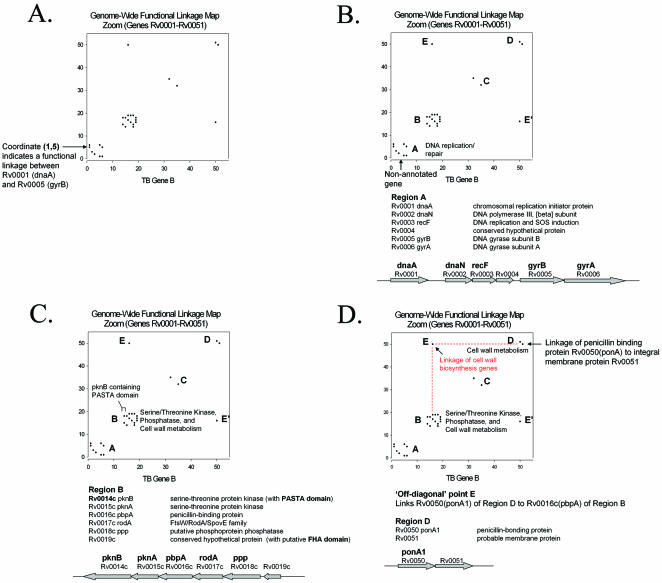Figure 2.
An expanded view of the genome-wide functional linkage map of Figure 1B, showing the portion of the map that contains the first 51 genes. (A) Notice the clustering of functionally linked genes along the diagonal. Twenty-eight functional linkages in this region are represented as single points corresponding to each functionally linked pair of genes. (B) Region A contains a cluster of functionally linked genes involved in DNA replication or repair as well as the uncharacterized gene Rv0004. (C) Region B contains a cluster of genes involved in serine-threonine kinase/phosphatase activity, cell wall biosynthesis and the uncharacterized gene Rv0019c. The genes of this cluster are linked by 14 functional linkages, and we infer that all of the proteins of this cluster function together in a common pathway involving the regulation and synthesis of cell wall components. This inference is further supported by the study of Yeats et al. (25), in which they identified a protein domain that directly links eukaryotic-like serine-threonine protein kinases to cell wall biosynthesis proteins (25). (D) Here we use the ‘off-diagonal’ point E to link Cluster B to Cluster D. Point E links gene Rv0016c(ponA1) of Cluster B to gene Rv0050(ponA1) of Cluster D. Notice also that point E and point E′ are symmetry related and represent the same functional linkage.

